Review: BlackBerry 10
BlackBerry Hub
BlackBerry Hub is the central nervous system of BB10. It is the one place that collects and filters all of your incoming and outgoing communications. When you first set up your BB10, you'll add your email, Facebook, Twitter, LinkedIn, SMS/MMS, and BBM accounts. All the messages from these apps/services land in the Hub and are pooled together in one massive, universal inbox. They can also be viewed in their separate inboxes and/or apps if that's how you roll.
The default view is to see all the messages in the universal inbox. If you want to look at just your emails or just your Twitter @replies, swipe to the right and you'll see the separate inboxes. Tap the one you want, and away you go. Each inbox has the same look and feel, as well as the same basic controls for composing new messages and managing the missives in your inbox. There are three little vertical dots (gee, where'd you get that idea, BlackBerry?) tucked at the bottom of the screen that, when pressed, open up the messaging controls. They let you sort, delete, move, store, and otherwise manage your various inboxes, whether they be emails, SMS, or Facebook messages. There is always a software back button to take you to the previous screen.
Whatever type of message you're viewing, they look the same and are threaded into a conversation view. Inserting any sort of media, whether it be a photo, video, or file, into an email, text, or BBM is a snap, thanks to the simple tools in the messaging apps.
BlackBerry made a couple of critical errors in the Hub that are mind boggling to me. The biggest one: You can't move from message to message. In other words, if you're viewing an email, there is no way to advance to the next or previous email without first backing out to the main inbox. This triples the number of screen presses needed to clear your inbox. Android, iOS, and Windows Phone all let you jump from message to message. There are also no controls to select all the messages in a given inbox to mark them all read en masse. You have to select each message individually. This is maddening.
The Hub also leaves out most of the advanced features available in older versions of BlackBerry OS. For example, in BB7 you can used the BB button to call up dozens of secondary actions for emails, such as copying the email address, or automatically selecting and calling phone numbers buried in email messages. How on earth could BB10 leave these essential features out? You can still highlight email addresses and web pages within emails, but phone numbers are out.
On the plus side, HTML emails look good, messages are pushed in real time, and searching your inbox is a snap (and effective). BlackBerry users will be familiar with the red notification light that blinks when new messages are available. Together, the red light, BlackBerry Peek, and BlackBerry Hub always let you know when you've got a message, and what type of communication it is.
BBM works well and can be used to circumvent carrier messaging plans. It is as easy as ever to set up BBM contacts, groups, and manage them via BlackBerry Hub and the BBM app itself. The best part of BBM is that it can now be used to conduct VoIP calls and two-way, real-time video chats. These features were easy to use, thanks to the simple layout of the controls, and worked fairly well. Quality of voice calls over VoIP was decent, and the quality of video chatting was as good as on any other device.
The new BBM for BB10 also lets users share their screen with other BB10 device owners. It is a really neat feature if you need to troubleshoot something or want to show something that's on your screen. It's cool, and works seamlessly with other BB10 phones. It is one of the more innovative features in the new paltform.
Calls and Contacts
The BB10 phone app looks nearly identical to the stock Android phone app. There are three tabs along the bottom, one each for the dial pad, contacts, and call log. Making and receiving calls is a snap, and I didn't have any trouble figuring out how to use the speakerphone, send calls to Bluetooth headsets, mute calls, or add a line. These features all work just as they should.
The phone app does one important thing that I absolutely love: when you look at your contacts from the phone app: it only shows phone numbers. The phone app is smart enough to know that you probably want to call your contacts, not email them. This reduces the visual clutter and makes it much easier to find numbers and call people. Yay.
The contact application provides a rich set of features and populates contact cards with all of the data from Facebook, Twitter, and LinkedIn so all of your contacts' details are available in one spot. This is both a blessing and a curse (more on that in a second). Similar to how BlackBerry Hub looks and acts, you can sort between just your Facebook contacts or just your BBM contacts, as well as all of them together by swiping back and forth. The contact cards let you see recent messages or calls you've had with each particular person, as well as their recent social networking updates, just as Android does. Profile images are pulled in from various social networks, and the result is a colorful and active place in which to search through your contacts and interact with them. Once again, the search tool is a godsend, especially if you have more than several hundred contacts.
The one flaw that bugs me (and makes the search feature mandatory) is that the contact app adds all the people you follow on Twitter to your contact list. I may be an exception, but I follow about 1900 people on Twitter. (Some people may have a similar number of Facebook friends.) This means there are 1900 people in my contact book just from that service alone, not including the 1500 or so "normal" contacts imported from my Gmail account. This could be handled better, no doubt.
Social Networking
Outside of BlackBerry Hub, Facebook, LinkedIn, Twitter, and Foursquare are all included in BB10 (or at least preinstalled on the Z10) via separate applications. Each of these four apps looks and behaves identically to the Android version, and in fact are repackaged versions of the original Android apps. That means it is easy to transition from Android to BB10 as far as the social networking apps are concerned.
Any account that you tie to BB10 (i.e., anything that appears in BlackBerry Hub), becomes part of your larger social networking circle. In other words, sharing from one app to any of your social networks is a snap. For example, if you're looking at photos in the photo gallery, use the little "share" button to bring up a list of all your social networks/accounts and fire away. Notably absent: Google+. It's not available at all.


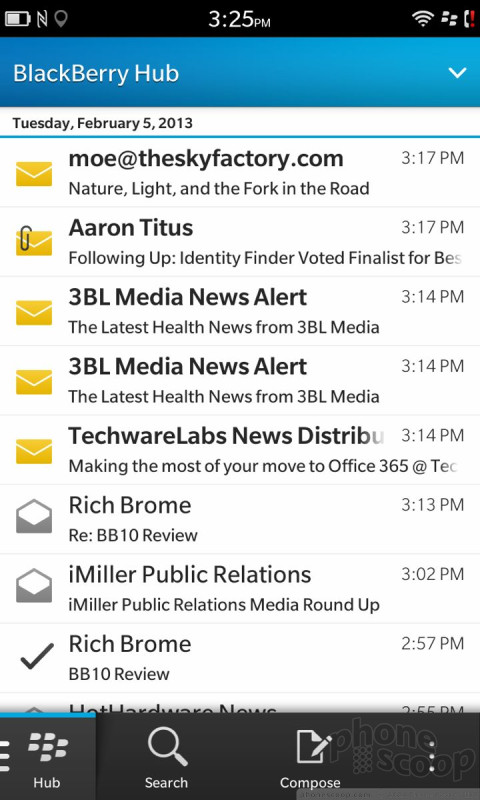





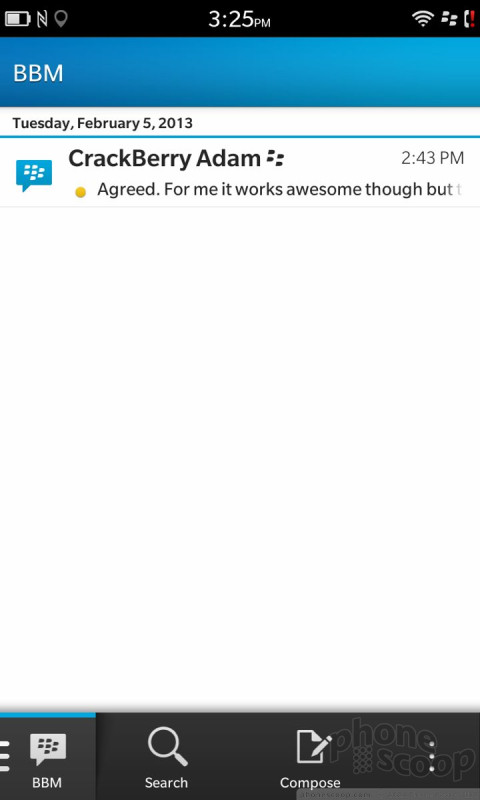




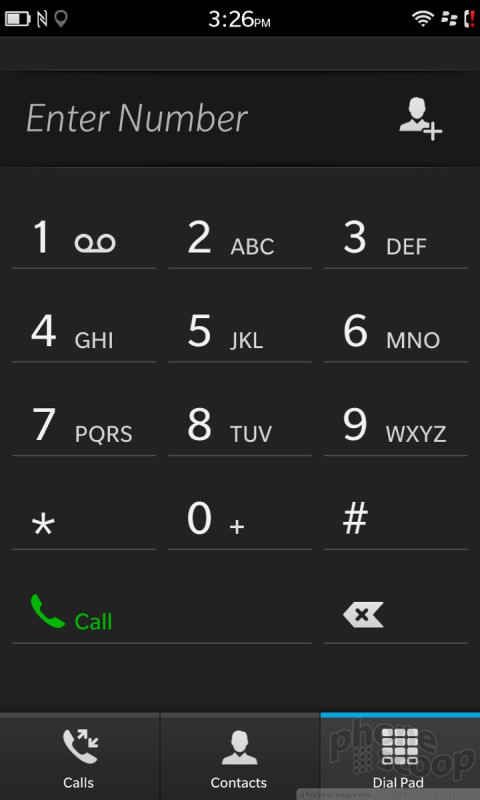



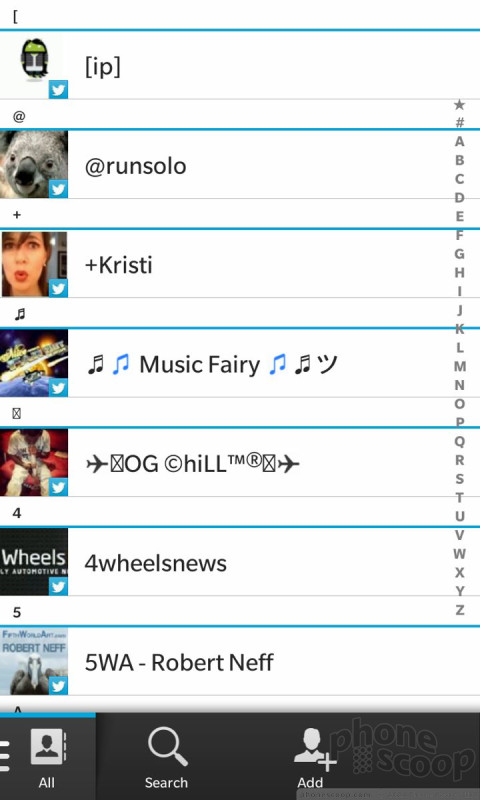



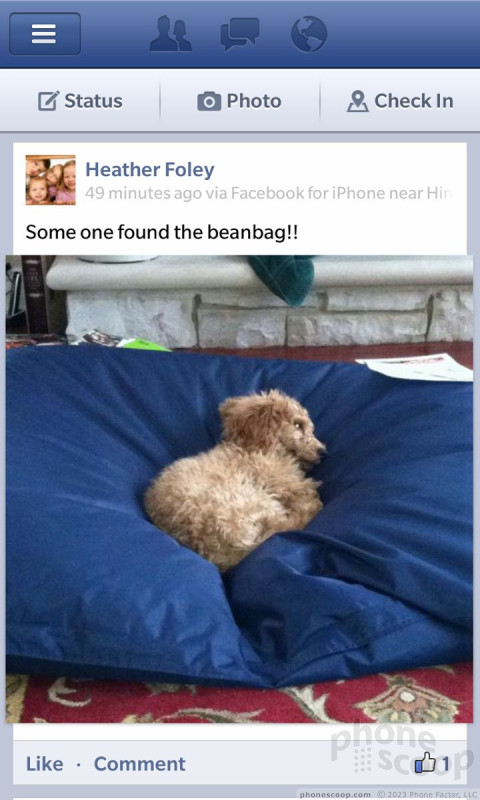







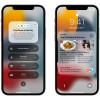 Apple Announces iOS 15
Apple Announces iOS 15
 Samsung Refreshes Galaxy S Series with S Pen, New Cameras
Samsung Refreshes Galaxy S Series with S Pen, New Cameras
 iPhone 14 Plus Offers a Big Screen For Less
iPhone 14 Plus Offers a Big Screen For Less
 Apple Intros AirTag to Help Find Your Keys
Apple Intros AirTag to Help Find Your Keys
 Apple Turbo-Charges FaceTime to Compete with Zoom
Apple Turbo-Charges FaceTime to Compete with Zoom



